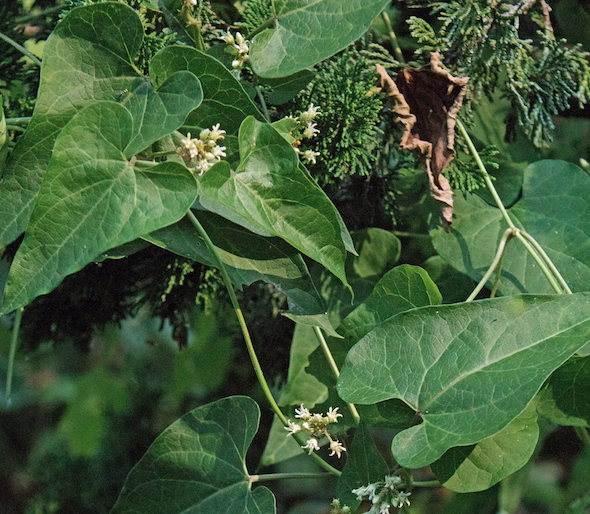Honeyvine milkweed: a native with mixed reviews
Published 5:46 am Thursday, September 1, 2016

- Honeyvine milkweed is a vining plant resembling morning glories, but has small blooms and serves as a host plant for monarch butterfly larvae.
I often hear people describe all native plants as good and all non-native species as invasive or bad, and I become concerned. Life just isn’t that simple, especially in Mother Nature’s garden. Non-native species are exotic, meaning they didn’t originate here, but it doesn’t mean they’re all invasive, totally out-of-control garden thugs. There’re lots of shades of gray about what’s good or bad.
I found just such a case in my garden recently, a very robust looking honeyvine milkweed (Cynanchum laeve) winding its way through one of my favorite conifers. It’s native to Virginia and much of the eastern half of the United States. At first glance, this plant looks quite similar to morning glories. It has heart-shaped leaves and it’s a very good climber. The blooms, however, are small with greenish white petals that are only 1/4-inch long. Surprisingly, it’s a member of the milkweed family and is also known as climbing milkweed.
Honeyvine milkweed isn’t very particular about where it grows — fencerows, disturbed areas, yards and fields, and vegetable gardens — just about anywhere its seeds germinate. This plant can climb at least 20 feet and has a strong taproot that can grow 6 feet deep. Digging doesn’t easily remove honeyvine milkweed since it’s so difficult to get the entire taproot. Forget it’s in your garden and it will produce typical milkweed seed pods full of countless seeds capable of floating quite some distance on even a gentle breeze. So … honeyvine milkweed is a problem in both home gardens and fields of no-till crops. Most extension office websites provide instructions on how to eradicate it.
Trending
And now for the good news about this plant: It’s a milkweed and, as such, serves as a host plant to monarch butterfly larvae. In fact, a recent study found monarch larvae developed slightly faster when feeding on honeyvine milkweed than on common milkweed. So, this plant may be a more important host plant than had previously been thought. Various types of native bees also visit the blooms throughout the summer.
As far as I’m concerned, it’s a plant at your own peril species. It’s not welcome in my garden, but it’s nice to know what it is and has some useful characteristics. Happy wildflower hunting, and be careful on these hot, humid, late-summer days.
Cynthia Wood is a master gardener who writes two columns for The Farmville Herald. Her email address is Cynthia.crewe23930@gmail.com.





